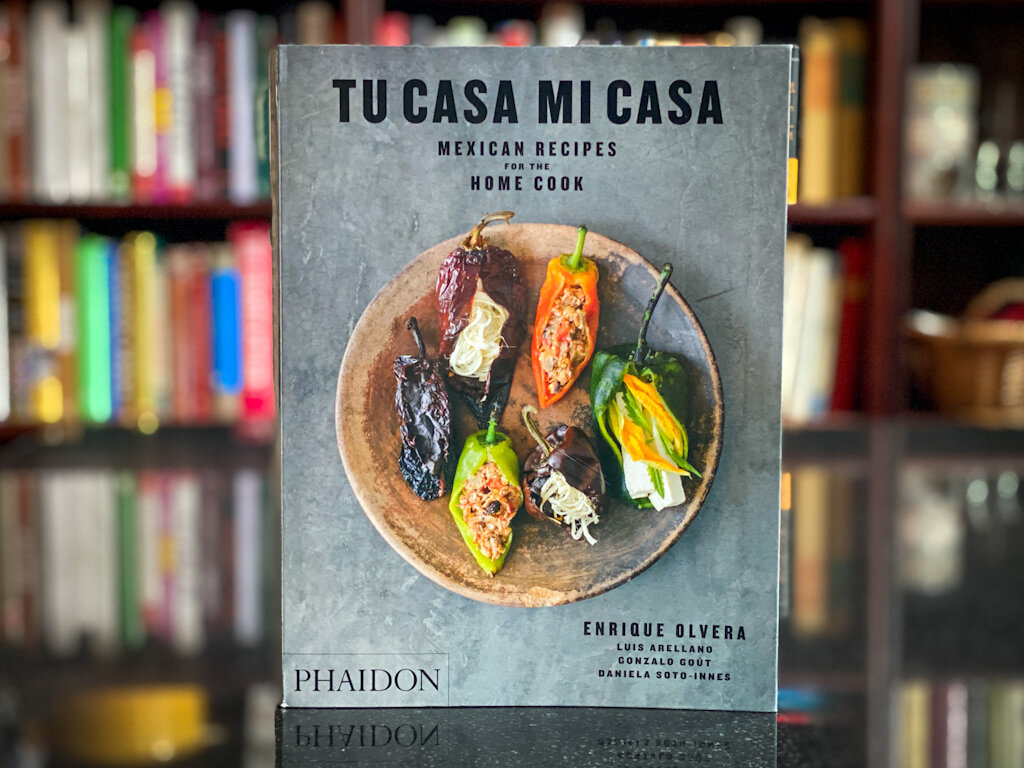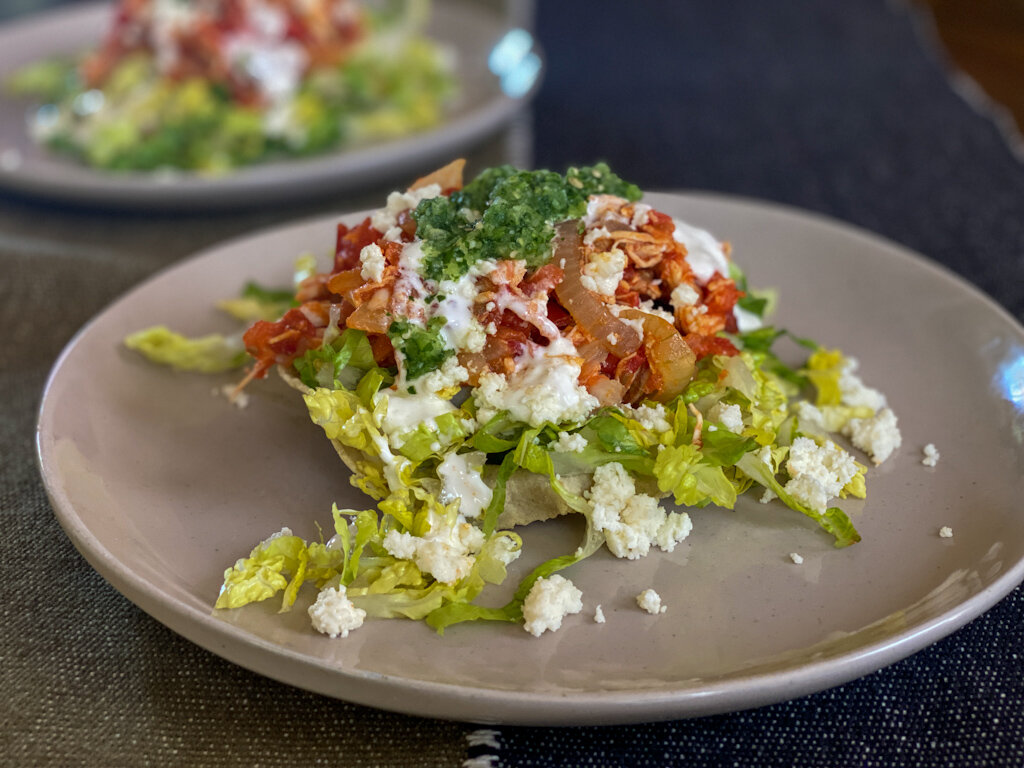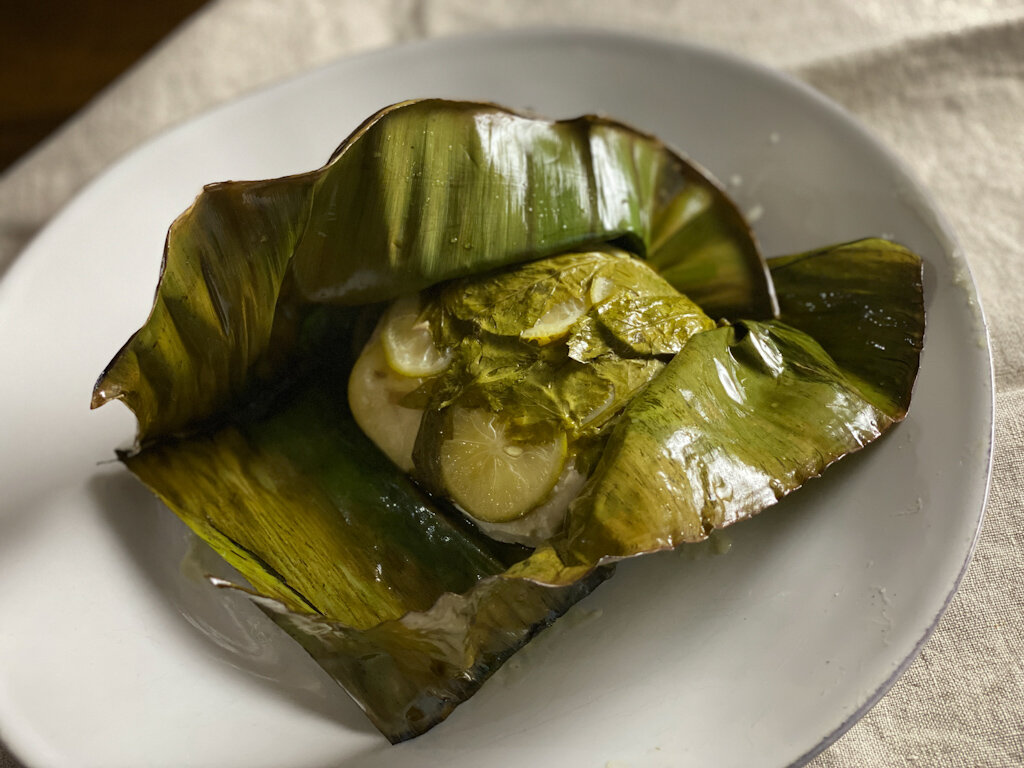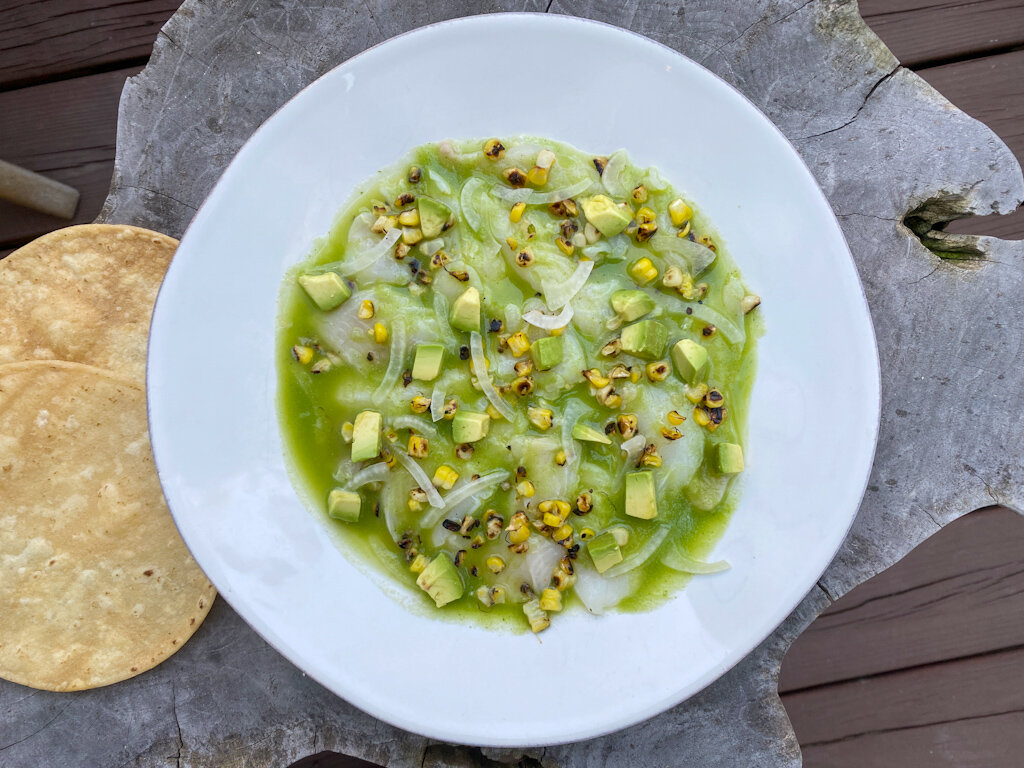By Leslie Brenner
TU CASA MI CASA: MEXICAN RECIPES FOR THE HOME COOK, BY Enrique Olvera, Luis Arellano, Gonzalo Goût and Daniela Soto-Innes, Photographs by Araceli Paz, 2019, Phaidon, $39.95.
Backgrounder
Anyone who’s a fan of contemporary Mexican cooking knows that Enrique Olvera is its most famous chef, with restaurants including Pujol, Ticuchi and Eno (Mexico City), Criollo (Oaxaca), Cosme and ATLA (New York City), Damian (Los Angeles), Manta (Cabo San Lucas) and others. He’s also widely considered to be one of the most outstanding chefs in the world. A counterbalance to his gorgeous 2015 coffee-table chef book, Mexico from the Inside Out (also published by Phaidon), this flexibound book is aimed toward home cooks. Olvera’s coauthors are involved in some of his highest profile restaurants. Luis Arellano was the opening chef at Criollo , and has served as creative director at the flagship, Pujol. Gonzolo Goût, who specializes in researching Mexican food cultures and worked on both books, was opening general manager of Cosme, and is Olvera’s partner at Ticuchi. Daniela Soto-Innes is chef-partner of Cosme and ATLA.
Why we love it
Tu Casa Mi Casa is delightfully approachable and useful, filled with easy, often quickly made recipes that even beginning cooks can make any night of the week. Cooking from it, you have the impression this is how the world’s most accomplished and talented Mexican chefs would put together laid-back dinners at home; it charmingly conveys how people in Mexico really cook and eat at home.
I found three such recipes I love in a chapter called “Weekday Meals.”
I’d been looking for ages for a worthwhile version of tinga de pollo (chicken tinga), usually put off by how seemingly too simple the recipes were. Tu Casa’s headnote explains why: “The first recipe any Mexican will cook as soon as they move out of their parents’ home and live on their own is chicken tinga.”
Made from ingredients you can get at any supermarket, Tu Casa’s version is delicious.
To achieve it, poach a chicken breast in salted water with white onion and garlic, shred the meat, add it to sautéed sliced onion and garlic, along with chipotle chiles chopped to a paste, lots of roughly chopped plum tomatoes and some of the chicken’s poaching liquid, then cook about 10 minutes, till the tomatoes break down. That’s it.
We had it both ways suggested in the headnote: The first night we loved it served on rice with tortillas; Next day for lunch, I cooked down the leftover tinga a bit to thicken it, then used it make chicken tinga tostadas. To make them, I layered corn tortillas dried for an hour in a low (200 degree F.) oven with shredded lettuce, the tinga, crumbled queso fresco, a drizzle of crema and a spoonful of Raw Salsa Verde. I’ll make these again and again.
Chicken tinga tostada with queso fresco, crema and raw salsa verde — what a lunch!
Another weekday recipe — fish fillets wrapped in banana leaves with citrus and herbs then baked — was equally simple, but impressive enough for a dinner party.
Banana-Leaf Fish from ‘Tu Casa Mi Casa’ by Enrique Olvera, Luis Arellano, Gonzalo Goût and Daniela Soto-Innes.
In making the dish, you learn how to make a banana leaf square pliable enough to fold (hold it over an open flame a few seconds till it blushes emerald green), and how to fold it around the fish, herbs and citrus tamal-style. (We give you the step-by-step in our adaptation of the recipe.)
I also enjoyed a simple dish of Calabacitas a la Mexicana — Mexican-style summer squash — that vegans will love.
Its headnote explains that the dish is “one of the most classic expressions” of the mexicana style, which it defines:
“A la Mexicana — a preparation with tomatoes (red), onions (white) and serrano chiles (green) — gets its name from the colors of our flag.”
For more experienced cooks and those who want to dive deeper into the cuisine, Tu Casa Mi Casa is super strong on technique — explaining how to judge when masa is the right consistency for tortillas or tamales; how to season and maintain a clay comal; how to press and cook a tortilla or tlayuda, fold a tetela and shape a tlacoyo. It runs down how to cook beans and explains how make requesón (fresh cheese). It lays out the different types of salsas, gives basic recipes and explains how to use them and riff on them.
The salsa verde, which I used on the chicken tinga tostada, is so simple you don’t need a formal recipe: Put 5 large tomatillos (husked, washed, quartered), a quarter of a large white onion, 1 or 2 seeded serrano chiles, a charred then peeled garlic clove, and half cup of chopped cilantro in a blender or food processor with salt to taste and blitz.
‘Tu Casa Mi Casa’ aguachile, with halibut swapped out for the hamachi
Still wanna make
I loved an aguachile with charred corn and avocado, but couldn’t get the hamachi the recipe called for so used halibut, will try that again with hamachi. High on my list of dishes to try: Cream of Squash Blossom Soup (Sopa de Flor de Calabaza); Cactus Salad (Ensalada de Nopal); Seafood Cocktail (Vuelve a la Vida); Raw Fluke with Salsa Macha; Broccoli Tamales; Chiles Rellenos (those beautiful ones shown on the cover); Barbacoa; Sweet Corn Tamales; Mexican Chocolate Ice Pops (Paletas Heladas de Chocolate); Cashew Horchata. That’s a lot of still-wanna-makes!
One tiny wish, if there’s ever a new edition
Buried on the very last page, in a tiny “recipe note,” is one that says “All chiles should be destemmed, seeded and deveined unless otherwise specified.” Would be much more useful to have that up front.
And I very much hope there is a new edition because it was first published in the spring of 2019, only months before Masienda began selling masa harina made from heirloom corn. Now that this fabulous masa harina is easy to purchase, I’d love to see how the authors — who played an important role in the founding of Masienda — would incorporate the ingredient.
In any case, I can’t recommend this book more highly. It belongs on the bookshelf of anyone interested in Mexican cooking, whether a dabbling beginner or an experienced chef.






